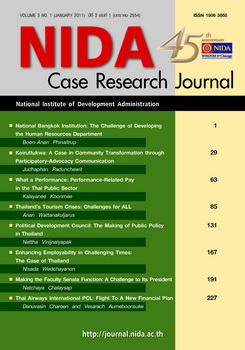Thailand’s Tourism Crises: Challenges for ALL
Keywords:
Tourism crises, Tourism Image, Economic Impacts, Impact Mitigation, ThailandAbstract
In June 2010, the Minister of the Ministry of Tourism and Sports (MOTS) of the Royal Thai Government received a special assignment to propose suitable measures for impacts mitigation and image recovery for Thai tourism industry as a whole. The Minister of MOTS began analyzing tourism statistics and surveys and synthesizing numerous attitudes from public and private tourism-related organizations in order to understand the overall tourism performance, the underlying impacts of tourism crises, and the challenges against tourism image. With all necessary efforts, the Minister of MOTS must come up with appropriate measures for Thai tourism industry under the crisis situations.
The case conveys a brief review of the past crises in a sequence, starting from the 9/11 terrorist attacks, the Iraq war and the SARS epidemic, and the avian flu and the tsunami. The latest tourism crises, challenges for all, are then presented in order from the World economic crisis (the oil price crisis and the Hamburger Crisis), to the 2009 influenza, and the political disturbances. Strategies employed by the MOTS are illustrated. The economy-wide impacts of the latest crises and the impacts on the image of Thailand are presented.
The case leaves the analyst with several questions, issues, and lists of six measures to ponder and resolve. What are the major differences between the past crises (before 2008) and the latest crises (during 2008 – 2010)? What were the underlying impacts of the latest crises on the economy as a whole, the tourism industry, and the image of Thailand? Which of the six alternative measures should the Minister of MOTS put in the proposal to the Cabinet? Why?





